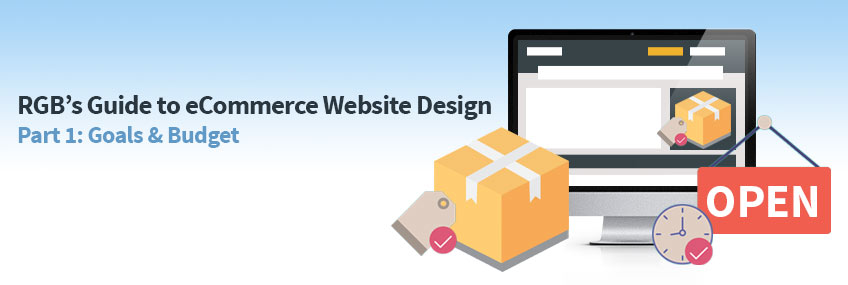Building the best eCommerce website for your unique online businesses needs can be overwhelming. In fact, we meet with new clients everyday who are bewildered by the plethora of choices out there. Web builders, shopping cart systems, shipping & merchant fees, even hosting can be confusing. That’s just a small aspect of everything that goes into an eCommerce website design. The wrong choice can affect your sales performance.
The journey to discover the best website to fit your businesses online sales needs is not always easy. As a Florida eCommerce website design company, our insights can help you better understand and make the right choices for your website. We have years of experience building eCommerce sites that succeed, and we want to help.
That’s why we’ve created this ongoing blog series, and we want to share with you our methods for successful eCommerce websites from start to finish.
The first step
Part one is a questionnaire designed to help you understand the online needs and goals of your company. The questions below are designed to provide you and your web design & online marketing team with a clear grasp of the scale and cost of your eCommerce website design.
Ask yourself the following questions:
1. What is your website’s initial goal?
If your business sell products it will require a shopping cart system; if you are online only sales or if you have a physical retail store you will need to consider how the sales of your online store is tracked within your internal POS system. Think about the daily operations for sales of your products
2. How many & What type of products will you sell on your site?
This question helps your web design team understand the complexity and size of your site, and provide you with realistic pricing. If your products have different versions (small, medium, and large shirts, for example) you will need a website that easily creates many simple products based off one main, or configurable, product.
3. Do you have any marketing goals for your new website?
Selling your products and services is an obvious goal, but if you want to feature certain products let your web & marketing team know early on so they can incorporate your goals into the design. Be sure to let them know if you are doing any offline marketing. This can inspire and influence their design, and help create a cohesive brand both online and off.
4. What sets you apart?
Selling yourself is just as important as selling your products.
5. Who are your top 3 competitors?
List your top competitors and then spend time reviewing their websites. There is no two ways about this: Your website design must be on par with your competitor’s design and features. People decide instantly if they want to shop on your website and poor or outdated design is the difference between a sale for you or your competition.
6. What is the profile of your ideal customer?
Are they business owners, individuals, families? What is the median age? Where are they located? These questions help your website’s content writer learn how to speak to your audience. Motivations for purchase can also help your marketing team gather valuable insights.
7. How do they currently purchase your product(s)?
Describe all ways someone can purchase your product, and also include any concerns you or your customers have had purchasing those products.
8. How much do they know about your product(s)?
If your customers lack information, it can negatively affect their decision to click on that ‘buy now’ button. Informative pages, product details, multiple photos, blogs, and social media content can help close this gap.
9. What do they want right now, when they search for your product(s)/service(s)?
Answer this question as a list of search terms someone would type when looking for the products or services you offer and you will have created an initial list of possible keywords, which is essential to your website’s search engine optimization. Try to be as specific as possible.
10. What is the average estimated lifetime value of one of your customers?
If you are interested in a pay-per-click campaign, this will help your marketing team uncover a reasonable percentage to be spent per lead.
11. What is your estimated budget?
We can’t express enough how helpful it is to be upfront about your budget with your team. Most web designers will work within your budget and do the best they can with what you give them. However, feature rich eCommerce sites can be expensive. Expect them to start at $6,000. In turn, if you want to focus on a single product consider a landing page and put the additional dollars towards pay-per-click.
12. How much time will you (or a member of your team) be willing to allocate to your website design?
Budget and time are the most important aspects of your eCommerce website design success. As an eCommerce website company, we have experienced the gamut of clients. We have learned that the most successful websites happen when you invest the time in the planning stages of your website, and it makes all the difference.
Part 2: Choosing the right eCommerce Platform & Hosting


